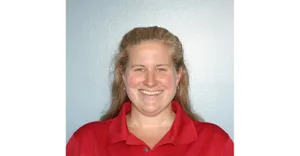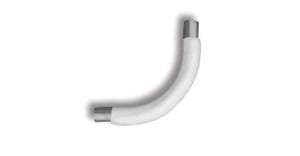June 18, 2008
|
Ted Kopczynski |
Weighing plays an integral part in a wide variety of industrial processes. A typical weighing system consists of a weight controller, a load sensor–based scale, and a programmable logic controller (PLC). To be reliable and accurate, weighing systems must be calibrated. But how often is enough?
Old weighing systems included dials and pivots, springs, counterbalances, or levers, which required constant maintenance. Today’s weighing systems, which consist of an electronic instrument and strain gauge–based transducers or load cells that move only a fraction of a millimeter with weight applied, should not require constant recalibration. The electronic PLC connected to the instrument consists of groupings of bits and bytes that require only well-written code.
Traditional scale calibration requires the use of Class F accuracy-certified weights (within 0.01% of denomination) that have a total weight of 80 to 100% of system capacity, at least three weights between 10 and 100% of system capacity to check the midrange, and several low-capacity weights that are equivalent to one or two instrument divisions.
Conditions for calibrating a process weighing system are often less than ideal. Many vessels lack a place for the required test weights. Also, it may not be possible to distribute the weights equally on the scale vessel. Some vessels are mounted high above the plant floor or in areas that offer limited accessibility. Still others have weight capacities far in excess of the available test weights. Multiple calibrations over time can also yield dissimilar results because different personnel use diverse calibration methods or different test weight quantities or because they place the weights at different locations on the scale. Error-prone calibration is the likely result. Yet users calibrate their electronic weighing systems monthly, weekly, daily, and—in some cases—at the beginning of every shift.
If a scale with quality components requires regular recalibration, it should undergo troubleshooting. In such cases, scale verification, not recalibration, is required. By adding a known weight to the scale during verification, the user ensures that it weighs correctly. No parameters are changed. Scale verification is unrelated to calibration. Whether calibration occurs electronically or with test weights, scale verification is necessary. While it requires the use of a calibrated test weight, it does not call for the 80 to 100% of capacity that is needed for calibration. For most scale applications with capacities up to 10,000 lb, 50 to 300 lb of calibrated test weights are sufficient.
Simple verification is written into a company’s ISO procedure outlining how often it must be performed and what it consists of. This procedure may involve the following steps: Step 1—A proper weight’s readings should be verified with test weights by adding and then removing the weights. Step 2—If the scale is within operating specifications, nothing is required but documentation of the results. Step 3—If the scale is outside operating specifications, recalibration should not be performed. Instead, the source of the problem should be sought. Recalibrating only masks the weight-reading error. Thus, unless the scale is fixed, recalibration will be required constantly.
Random scale errors can occur when the piping is improper; when a bag, ladder, or pallet leans against the scale; when material has built up beneath the platform scale or load cells; when pressure has changed in other than a horizontal hose from the dead to the live side of the scale; when an electrical connection is faulty; when moisture is present in the junction box; when flexures are broken or bent; or when low-cost or poorly designed weighing components are used.
Typical calibrations use only 10 to 20% of scale capacity and are used to calibrate the scale to follow a linear line. Accuracy is generally ensured at only two points: zero and span. Verification ensures that the scale is within tolerance and offers repeatable results. If your scale is out of tolerance, don’t recalibrate it. Find the underlying problem and fix it.
Ted Kopczynski is product marketing manager at Hardy Instruments (San Diego), a leading designer and manufacturer of process weighing, tension control, and vibration-monitoring equipment. He received a BS in electrical engineering from San Diego State University and an MBA from National University in San Diego. He has more than 20 years of experience in process weighing.
You May Also Like



